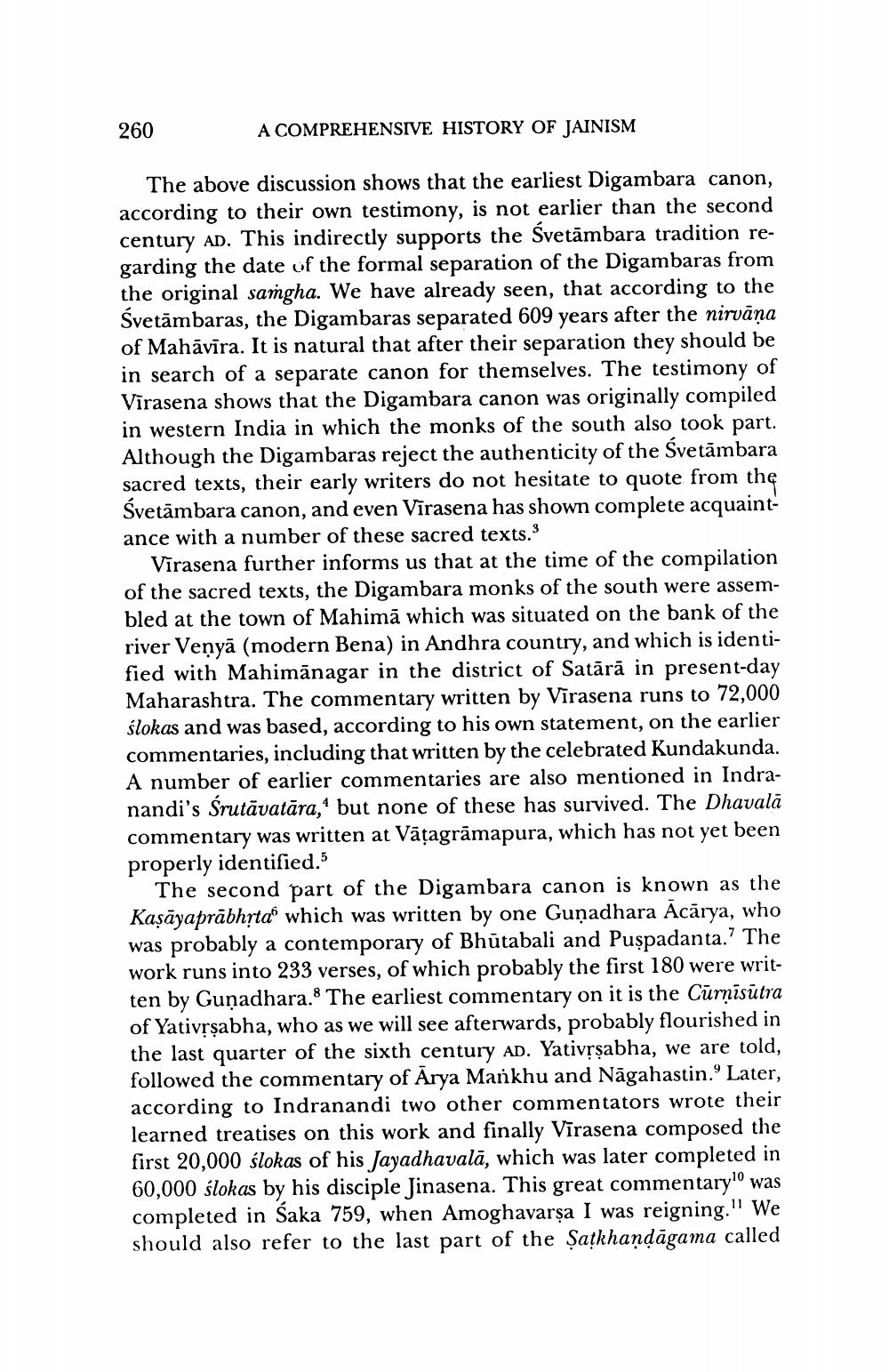________________
260
A COMPREHENSIVE HISTORY OF JAINISM
The above discussion shows that the earliest Digambara canon, according to their own testimony, is not earlier than the second century AD. This indirectly supports the Svetāmbara tradition regarding the date of the formal separation of the Digambaras from the original samgha. We have already seen, that according to the Svetāmbaras, the Digambaras separated 609 years after the nirvana of Mahāvīra. It is natural that after their separation they should be in search of a separate canon for themselves. The testimony of Virasena shows that the Digambara canon was originally compiled in western India in which the monks of the south also took part. Although the Digambaras reject the authenticity of the Svetāmbara sacred texts, their early writers do not hesitate to quote from the Svetāmbara canon, and even Virasena has shown complete acquaintance with a number of these sacred texts.
Vīrasena further informs us that at the time of the compilation of the sacred texts, the Digambara monks of the south were assembled at the town of Mahimā which was situated on the bank of the river Venyā (modern Bena) in Andhra country, and which is identified with Mahimānagar in the district of Satārā in present-day Maharashtra. The commentary written by Virasena runs to 72,000 ślokas and was based, according to his own statement, on the earlier commentaries, including that written by the celebrated Kundakunda. A number of earlier commentaries are also mentioned in Indranandi's Srutāvatāra, but none of these has survived. The Dhavala commentary was written at Vāțagrāmapura, which has not yet been properly identified."
The second part of the Digambara canon is known as the Kaşāyaprābhyta which was written by one Gunadhara Acārya, who was probably a contemporary of Bhūtabali and Puspadanta.' The work runs into 233 verses, of which probably the first 180 were written by Gunadhara. The earliest commentary on it is the Cūrņīsūtra of Yativrşabha, who as we will see afterwards, probably flourished in the last quarter of the sixth century AD. Yativrşabha, we are told, followed the commentary of Arya Mankhu and Nāgahastin. Later, according to Indranandi two other commentators wrote their learned treatises on this work and finally Vīrasena composed the first 20,000 ślokas of his Jayadhavalā, which was later completed in 60,000 ślokas by his disciple Jinasena. This great commentaryo was completed in Śaka 759, when Amoghavarşa I was reigning." We should also refer to the last part of the Satkhandāgama called




